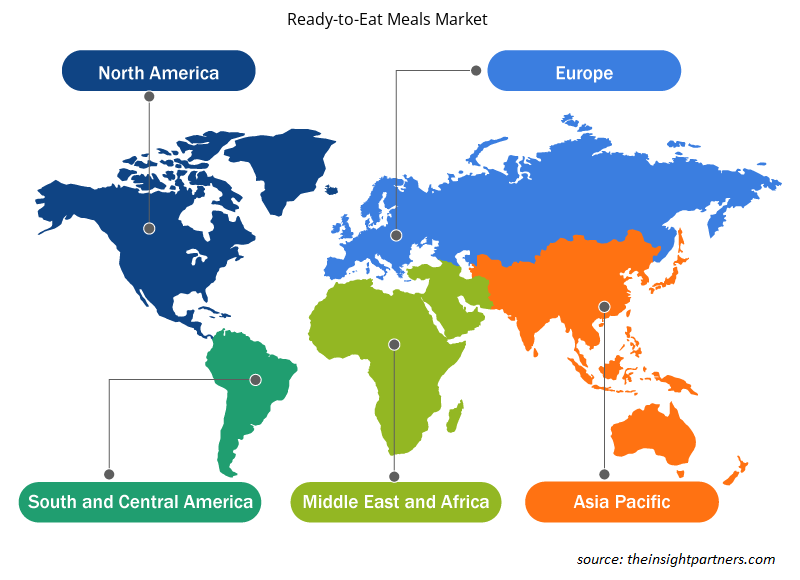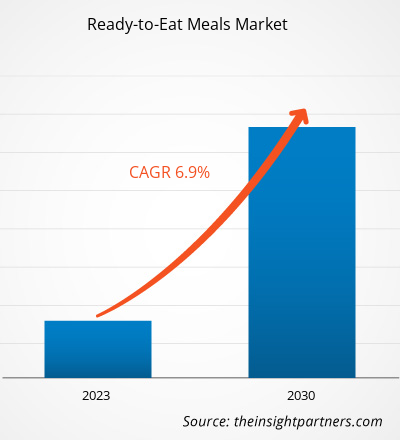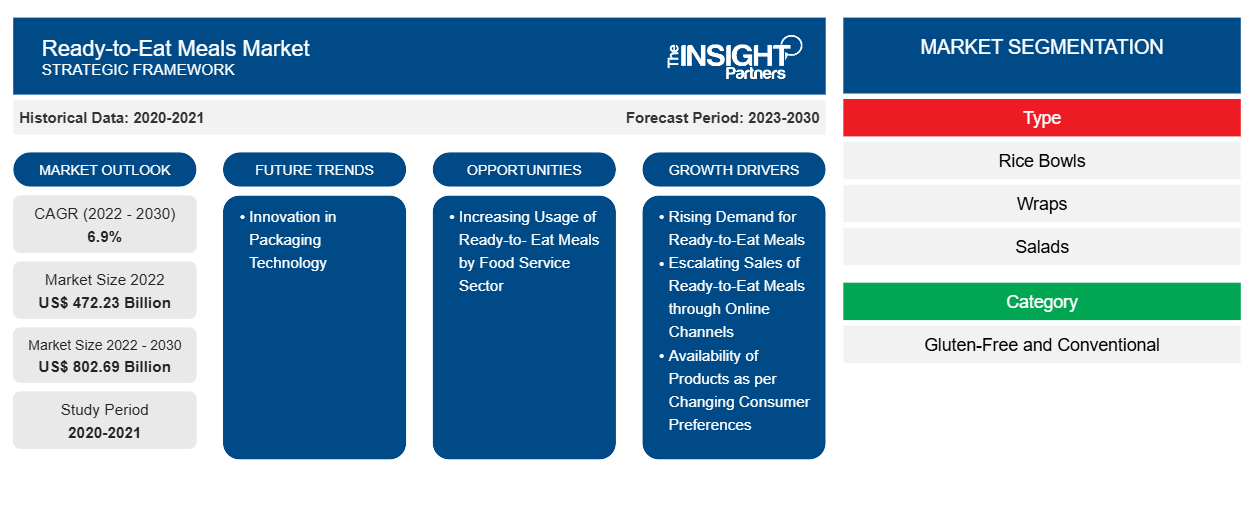[研究报告] 即食食品市场预计将从 2022 年的 4722.3163 亿美元增长到 2030 年的 8026.8921 亿美元;预计 2022 年至 2030 年的复合年增长率为 6.9%。
市场洞察和分析师观点:
即食食品是方便食品,可以在旅途中轻松食用。三明治、卷饼、披萨、汉堡、面条和意大利面、咖喱和肉汁、墨西哥卷饼和米饭碗是一些广泛食用的即食食品。由于企业部门的增长、双收入家庭数量的增加以及工作时间的延长,全球人民的生活方式发生了巨大变化。人们更喜欢即食食品,以避免烹饪时间和精力。这一因素极大地促进了全球即食食品市场的增长。
根据类别,即食食品市场分为无麸质和传统食品。该地区麸质不耐症的患病率不断上升,加上人们对无麸质产品的健康益处的认识不断提高,是推动无麸质即食食品需求的关键因素。此外,随着消费者能够更全面地接触各种无麸质即食食品品牌,预计该类别将在未来几年出现大幅增长。
定制此报告以满足您的需求
您可以免费定制任何报告,包括本报告的部分内容、国家级分析、Excel 数据包,以及为初创企业和大学提供优惠和折扣
- 获取此报告的关键市场趋势。这个免费样品将包括数据分析,从市场趋势到估计和预测。
增长动力和挑战:
高品质方便食品的消费已成为食品行业最大的趋势之一。方便食品,如即食产品、即食餐和冷冻产品,可以让消费者节省购买食材、准备和烹饪食物、食用和餐后活动的时间和精力。便利性和口味是全球消费者在购买食品时的主要期望属性。根据“国际食品信息委员会 (IFIC)”的食品和健康调查,便利性是千禧一代购买食品的主要驱动力。同时,口味对婴儿潮一代来说至关重要。
超市配送服务(如 Amazon Fresh 和 Instacart)和餐食配送公司(如 Blue Apron)都受益于人们对便利性和质量的日益增长的偏好。此外,由于冷链供应链的发展,他们发现 RTE 食品处理变得容易。这些因素推动了全球对方便食品的需求。
由于全球小家庭和双收入家庭的数量不断增加,即食食品等方便食品越来越受欢迎。由于工作日程繁忙,千禧一代更喜欢高效利用时间,避免繁琐的任务。即食食品经过加工并采用保鲜技术,从而延长了产品的保质期。节省的准备食物的精力和时间以及储存和运输的便利性进一步促进了其需求。根据国际食品信息委员会的“2020 年食品与健康调查”,在 1,011 名美国人(年龄在 18 至 80 岁之间)中,19% 的消费者更多地食用食品储藏室或冰箱中的预制食品。
根据 2020 年 Eating Better 即食食品快照调查,英国 88% 的成年人吃即食早餐和晚餐或即食食品。五分之二的人每周吃包装好的即食食品。因此,为了节省时间和精力,对即食食品等方便食品的需求不断增长,推动了全球即食食品市场的发展。
来自北美的美国工作专业人士数量激增。根据加拿大就业和社会发展部 (ESDC) 的数据,加拿大 2022 年女性和男性的劳动参与率为 88.142%,高于 2021 年的 87.075%。劳动人口数量的增加导致对方便食品(如即食食品)的需求更加强劲,这有助于节省时间和精力。超市、大卖场和在线零售等成熟的分销渠道使这些产品进入该地区的各个家庭,推动了北美即食食品市场的发展。在 COVID-19 疫情期间,网上购物平台获得了巨大的吸引力。根据美国外国农业服务局的数据,2022 年,加拿大零售食品行业出现了集中复苏,总销售额达到约 295 亿美元,比 2021 年增长 20.9%。因此,加拿大零售业高度多样化,预计将为即食食品市场提供新的机会。因此,上述所有因素都在推动即食食品市场的增长。
报告细分和范围:
“全球即食食品市场”根据类型、类别、最终用户和地理位置进行细分。根据类型,市场细分为米饭碗、卷饼、沙拉、墨西哥卷饼、肉汁和咖喱、面条和意大利面、披萨、汤和炖菜、肉类主菜、汉堡、三明治等。面条和意大利面在全球即食食品市场中占有最大份额。根据地理位置,即食食品市场细分为北美(美国、加拿大和墨西哥)、欧洲(德国、法国、意大利、英国、俄罗斯和欧洲其他地区)、亚太地区(澳大利亚、中国、日本、印度、韩国和亚太地区其他地区)、中东和非洲(南非、沙特阿拉伯、阿联酋和中东和非洲其他地区)以及南美洲和中美洲(巴西、智利和南美洲和中美洲其他地区)。
节段分析:
根据类型,即食餐市场细分为米饭碗、卷饼、沙拉、墨西哥卷饼、肉汁和咖喱、面条和意大利面、披萨、汤和炖菜、肉类主菜、汉堡包等。面条和意大利面部分在 2022 年占据即食餐市场的最大份额。沙拉部分预计在预测期内将实现更高的复合年增长率。即食意大利面餐有多种类型,例如意大利面条、通心粉、意大利宽面条和通心粉。意大利面餐包括虾、肉丸、鸡肉和植物性蛋白质来源等蛋白质来源。包装好的意大利面餐设计用于快速食用,几乎不需要烹饪。即食意大利面餐装在单份容器中,因此更容易控制份量和重新加热。饮食习惯的改变、忙碌的生活方式、接触多元文化以及对各种美食和方便食品的需求增加是推动即食面条需求的关键因素。制造商推出了多种类别的即食面条,例如纯素面条、无麸质面条或有机面条,使其成为一种更方便的用餐选择。
区域分析:
即食食品市场分为五个主要区域——北美、欧洲、亚太、南美和中美以及中东和非洲。全球即食食品市场以亚太地区为主,预计 2022 年市场规模约为 1500 亿美元。亚太地区的即食食品市场分为澳大利亚、中国、印度、日本、韩国和亚太其他地区。中产阶级人口的城市化进程加快和可支配收入的增加推动了对即食食品的需求,包括汉堡、三明治、面条、意大利面和披萨。根据国际劳工组织 (ILO) 的数据,2021 年亚太国家的总收入增长了 3.5%,其中中国在 2021 年占 0.3%,在 2022 年上半年占 0.7%。
中亚和西亚的总收入增长了 12.4%。由于可支配收入增加、时间限制和繁忙的工作日程,上班族更喜欢方便食品,例如米饭、卷饼、沙拉、面包卷、肉汁和咖喱、面条和意大利面、披萨以及汤和炖菜。
就机遇而言,亚太地区的即食食品市场具有巨大的创新潜力。制造商专注于产品开发,推出新的口味、配料和烹饪技术,以满足消费者多样化的口味和偏好。此外,针对学校、学院和公司办公室等机构提供定制的餐饮解决方案,为在亚太即食食品市场运营的企业创造了新的收入来源。
西方生活方式和饮食习惯的影响是推动亚太地区即食食品需求的另一个主要因素。然而,消费者的价格敏感性对亚太地区即食食品行业的发展构成了重大挑战。
行业发展和未来机遇:
以下列出了全球即食食品市场的主要参与者采取的各种举措:
- 2020 年 12 月,雀巢公司在中国推出了 Harvest Gourmet 的植物基即食食品产品线。产品线包括汉堡、香肠、鸡块、肉末以及宫保鸡丁、红烧丸子、五花肉和麻辣锅等植物基食品。
- 2021年6月,美国食品加工商“泰森食品公司”在亚太地区推出植物基即食食品。
- 2020 年 12 月,雀巢公司旗下即食餐食配送服务公司 Freshly Inc. 推出了即食餐食产品。这些产品不含麸质,标签清洁,且采用全食品原料制成。
即食食品市场区域洞察
Insight Partners 的分析师已详尽解释了预测期内影响即食食品市场的区域趋势和因素。本节还讨论了北美、欧洲、亚太地区、中东和非洲以及南美和中美洲的即食食品市场细分和地理位置。

- 获取即食食品市场的区域特定数据
即食食品市场报告范围
| 报告属性 | 细节 |
|---|---|
| 2022 年市场规模 | 4722.3亿美元 |
| 2030 年市场规模 | 8026.9亿美元 |
| 全球复合年增长率(2022 - 2030 年) | 6.9% |
| 史料 | 2020-2021 |
| 预测期 | 2023-2030 |
| 涵盖的领域 | 按类型
|
| 覆盖地区和国家 | 北美
|
| 市场领导者和主要公司简介 |
|
即食食品市场参与者密度:了解其对业务动态的影响
即食食品市场正在快速增长,这得益于终端用户需求的不断增长,而这些需求又源于消费者偏好的不断变化、技术进步以及对产品优势的认识不断提高等因素。随着需求的增加,企业正在扩大其产品范围,进行创新以满足消费者的需求,并利用新兴趋势,从而进一步推动市场增长。
市场参与者密度是指在特定市场或行业内运营的企业或公司的分布情况。它表明在给定市场空间中,相对于其规模或总市场价值,有多少竞争对手(市场参与者)存在。
在即食食品市场运营的主要公司有:
- 泰森食品公司
- SK 冷藏食品
- 新鲜烧烤食品有限公司
- 丹迪三明治公司
- 泰勒农场
免责声明:上面列出的公司没有按照任何特定顺序排列。

- 获取即食食品市场顶级关键参与者概述
COVID-19 疫情影响:
COVID-19 疫情影响了各国的经济和行业。北美、欧洲、亚太地区 (APAC)、南美和中美以及中东和非洲 (MEA) 主要国家的封锁、旅行禁令和企业停工对包括食品和饮料在内的各个行业的增长产生了负面影响。制造部门的关闭扰乱了全球供应链、制造活动、交付计划以及各种必需品和非必需品的销售。多家公司宣布,2020 年产品交付可能会延迟,其产品未来销量可能会下滑。此外,欧洲、亚太地区和北美各国政府对国际旅行实施的禁令迫使各公司暂时搁置合作和伙伴关系计划。此外,由于封锁而关闭的屠宰场也对市场增长产生了负面影响。所有这些因素都阻碍了 2020 年和 2021 年初的食品和饮料行业,从而抑制了即食食品市场的增长。
竞争格局和重点公司:
泰森食品公司 (Tyson Foods Inc.)、SK Chilled Foods、Fresh Grill Foods LLC、Dandee Sandwich Co.、Taylor Farms、Calavo Growers Inc.、Hearthside Food Solutions LLC、EA Sween、FreshRealm 和 TripleSticks 是全球即食食品市场的知名企业。这些即食食品制造商提供具有创新功能的尖端萃取解决方案,为消费者带来卓越的体验。
- 历史分析(2 年)、基准年、预测(7 年)及复合年增长率
- PEST和SWOT分析
- 市场规模、价值/数量 - 全球、区域、国家
- 行业和竞争格局
- Excel 数据集
近期报告
客户评价
购买理由
- 明智的决策
- 了解市场动态
- 竞争分析
- 客户洞察
- 市场预测
- 风险规避
- 战略规划
- 投资论证
- 识别新兴市场
- 优化营销策略
- 提升运营效率
- 顺应监管趋势





















 获取免费样品 - 即食食品市场
获取免费样品 - 即食食品市场